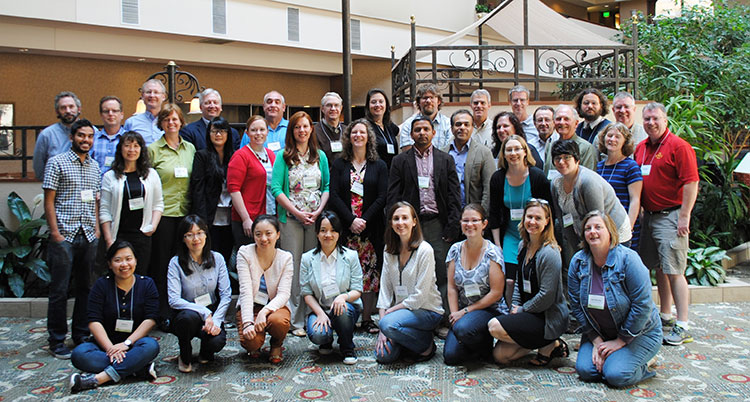
Despite the important roles that agricultural advisers play in agricultural decision-making, relatively little is known about the readiness of different types of agricultural advisers to use weather and climate information to help their clients manage risk under increasing climate uncertainty.
That's one of the key findings identified in a paper recently published in the journal Weather, Climate, and Society.
Tonya Haigh, research specialist at the National Drought Mitigation Center at UNL, is the lead author of the paper. Co-authors include Cody Knutson, water resources scientist at the center and research associate professor in UNL's School of Natural Resources; Lois Wright Morton at Iowa State University; Maria Carmen Lemos and Yun Jia Lo at the University of Michigan; Linda Stalker Prokopy at Purdue University; and Jim Angel with the Illinois State Water Survey at the University of Illinois at Urbana-Champaign.
The paper, "Agricultural Advisers as Climate Information Intermediaries: Exploring Differences in Capacity to Communicate Climate," resulted from the Useful to Usable project and is available at http://go.unl.edu/yk5y.
"The U2U project seeks to improve the resilience and profitability of farms in the corn-belt region through the development and dissemination of improved climate-related decision support tools, resource materials and training," Haigh said.
The project is supported by a grant from the USDA National Institute of Food and Agriculture. One of the project's objectives is to better understand the factors influencing farmers' decision-making and how to best disseminate climate information to producers.
"Very little research has focused on the role of agricultural advisers in communicating climate information," Haigh said. "Our 2012 survey of a broad range of agricultural advisers showed that some ag advisers are already willing and largely able to incorporate weather and climate information into the advice they provide."
The group that seemed most ready to use climate information included certified crop advisers and agricultural retailers, in addition to extension educators. Certified crop advisers and ag retailers commonly provide advice with clear connections to short-term weather predictions, as well as historical climate averages. Thus, they must be somewhat familiar with weather and climate resources and tools to stay competitive, Haigh said.
Compared with other advisers, those who primarily provide financial advice seem the least inclined to incorporate climate information into their advice.
"These findings highlight opportunities to work with advisers who are currently capable to use weather and climate information, and to increase the capacity of other types of advisers to enable them to be more effective weather and climate information intermediaries," Haigh said.
Moreover, the paper's findings are relevant for the developers of climate information and tools who want to influence agricultural decision-making and production.
"It's worth tool developers' while to get out there and talk to crop advisers and seed dealers," Haigh said. "These advisers know what farmers are looking for, will have great feedback, and may be the best communicators of weather and climate information for certain types of farm decisions."
Looking to the future, Haigh said she'd like this research to promote more alliances and teamwork within the agricultural advising community.
"I hope that it leads to increased partnerships with a range of advisers – including crop advisers and seed dealers, extension educators, the Natural Resources Conservation Service and the Natural Resources Districts — in our efforts to increase the usefulness and usability of climate information."
— Mekita Rivas, Natural Resources